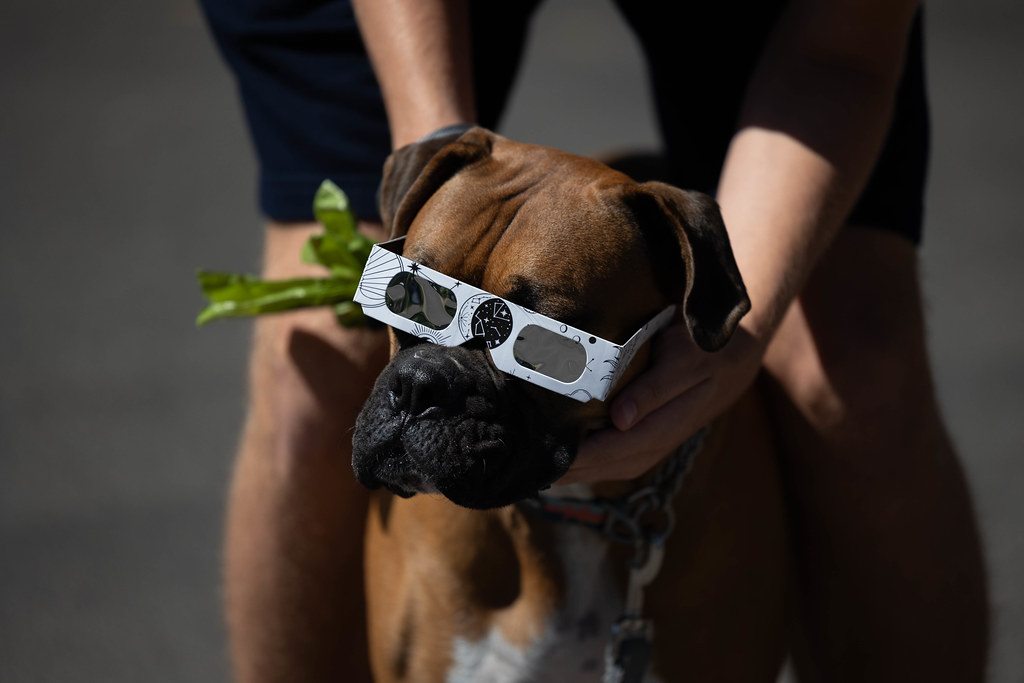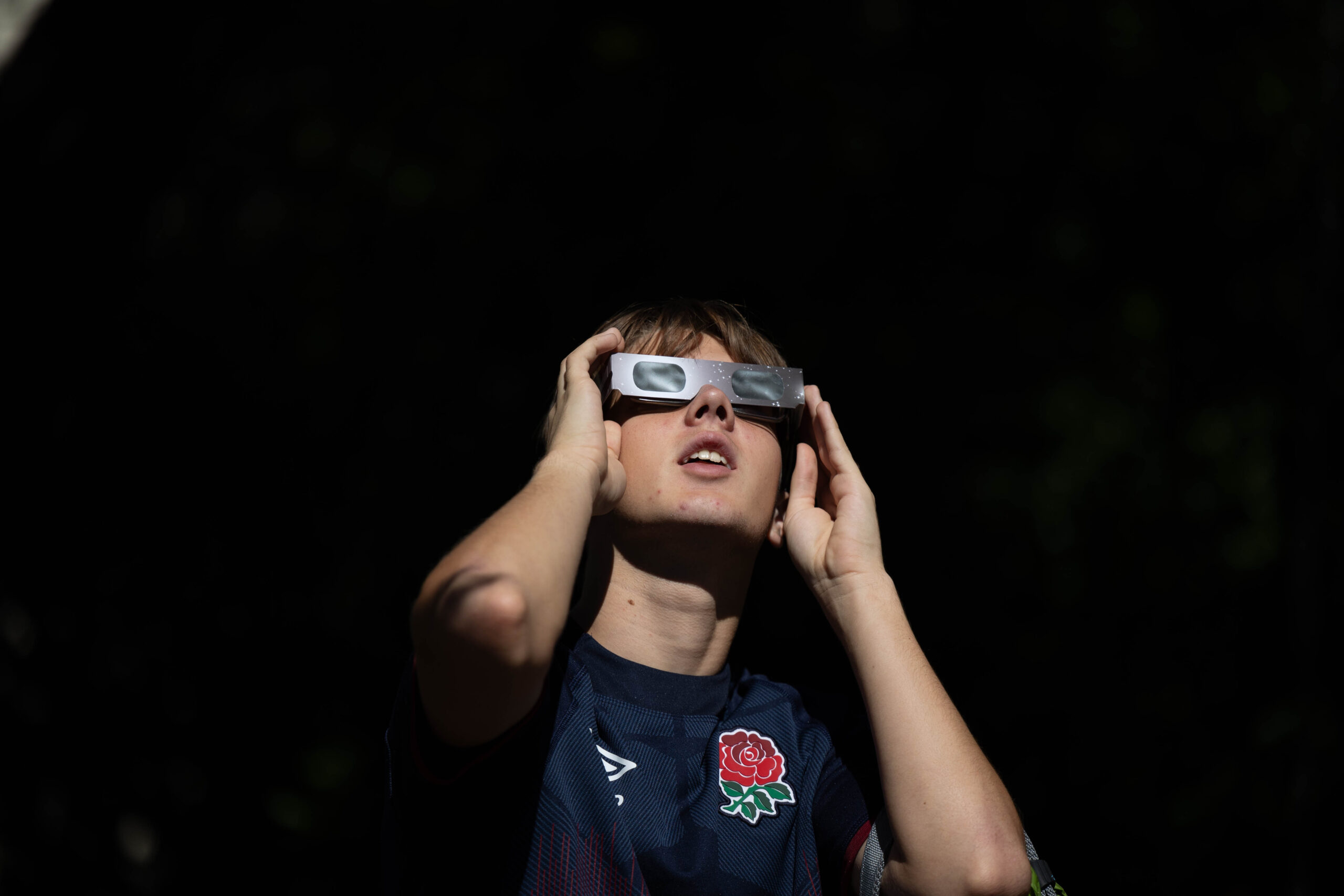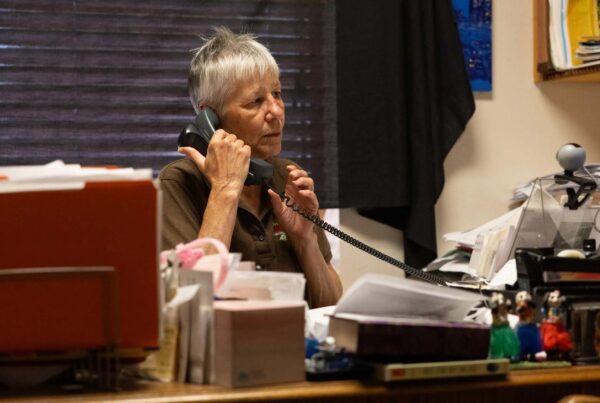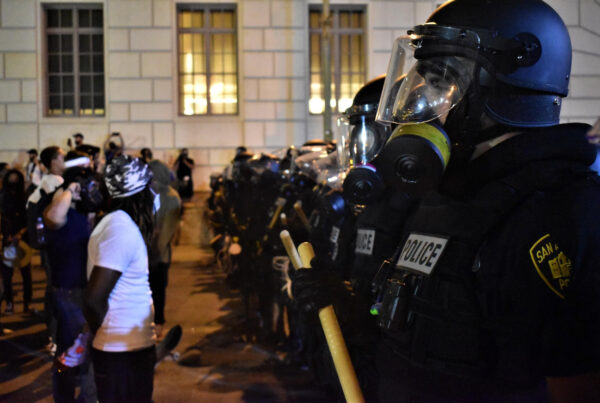April 8 is shaping up to be historic day across a large swath of Texas, as a total solar eclipse blocks the sun from view for a few breathtaking minutes.
But what will the hours and minutes leading up to the eclipse be like? How should you prepare if you will be in Eagle Pass, Fredericksburg, McKinney or another location in totality’s path? And what will you be able to observe about the sun and the moon?
Angela Speck, who chairs the physics and astronomy department at UT San Antonio – and is a veteran of many an eclipse – offers lots of tips and tricks for having the best experience on eclipse day. Check out her advice below, and listen to an extended interview with Dr. Speck in the audio player at the top of this story.
Eclipse day timing
On eclipse day, the moon will fully obscure our view of the sun in early afternoon – I believe it’s about 1:30 Central time or so.
The solar eclipse begins with what we call first contact. That’s when the moon first starts to impinge on the disk of the sun. And that happens at about 12:15, maybe closer to 12 if you’re Eagle Pass and closer to 12:30 or so in northern Texas. But it’s basically 12:15ish we start to see a partial eclipse.
If you don’t pay attention, if you don’t have special viewing devices, if you’re not looking at shadows, you wouldn’t even notice for another hour that anything weird was going on, because your eyes adjust as the sky gets dark; your pupils get bigger, and you can see the light just looks the same.
So when we talk about the sky getting dark, even about a minute out from totality, the sky is only like an overcast day – hopefully it’s not overcast; hopefully it’s clear – but the darkness is like an overcast day. It’s not super dark, but in the course of the next minute, it drops from overcast day to nearly full moon dark in one minute. It is faster than sunset even in the places where it sets really fast.
What you see before totality
Even when you get to like 99%, even when you’re really close to fully eclipsed, it’s still not that dark. Many people will have witnessed the Ring of Fire eclipse, a very good partial eclipse in October of last year. And it just didn’t get that dark.
And so you really don’t notice it getting darker until the sun is 75% eclipsed. And even then, it’s subtle, and it’s kind of like on a cloudy day when the sky sometimes goes green before hail, and you’re like, “whoa, the sky looks weird.” It’s like the sky is the wrong color.
During this solar eclipse, we do not even see the moon at all. Basically, what happens is, as the moon moves in the way, it just looks like some invisible force is taking a bite out of the sun. We do not see it because it’s not lit up. The side that is pointing towards us has no light on it, and so we don’t see it at all. Once it’s completely in the way, we see what looks like a black hole, because it’s the unlit side that is pointing towards us.
» MORE: Lipan Apache medicine woman shares why she will be indoors during the solar eclipse

Shadows from a partial eclipse are seen on a garage door on Oct. 14, 2023. Deborah Cannon / KUT News
Look into the shadows to see more
So the most fun thing to do is to look under trees. As you’re looking under a tree, what happens is that all of the gaps between the leaves act as pinholes. So each of the holes, each of the gaps between trees generates an image of the sun. It does that every day. On a normal day when it’s sunny, if you look under a tree, what you’re seeing is lots and lots of overlapping images of the sun system. On a normal day, the sun is just a circle.
Anything with holes will work [for viewing shadows, like] taking a colander. In October, some of my faculty were using Day of the Dead masks that had little holes that looked like doilies. It doesn’t matter what shape the holes are, each one will make you an image of what the sun looks like in that moment.
So as you’re looking around, say, a park bench that has holes in it will make images. If you have a straw hat, that will make images. So there’s a lot of things to look at in the shadows.
The colander actually works pretty quickly, or if it’s just a nice isolated hole, so that you can see it even when there’s only a small part of the sun eclipsed. Whereas on the trees, because you’ve got lots and lots of holes and they’re kind of randomly spread out, you don’t really see it until it’s about 50 to 75% eclipsed, just because there’s too many things overlapping on top of each other.
It’s kind of fun to just play around with the shadows. You can make waffle patterns with your hands. I’m actually going to be carrying a disco ball. The same thing that happens with the gaps between the trees or the colander with the with a hole happens with the little squares of mirrors: It makes images of the sun.
In a disco, you’ve got lots of square mirrors. But the lights that are reflected on the sides of the disco hall are circular, because your light bulbs are circular. And so it’s doing the same thing. So even on a normal day, you can get it to give you nice circular images of the sun. But on eclipse day, it will give you that crescent look where the moon is biting out of the sun, and you can see the crescent shape.
I had a lot of fun with this in October. It’s absolutely fine because you’re just looking at it reflect. You’re not looking at the mirror. You’re looking at the spot on the wall.
» MORE: Photographer will attempt to capture the total solar eclipse using 1800s tintype technique

Jack Cooper fits his dog, Henry, with glasses as a partial eclipse takes place on Oct. 14, 2023. Deborah Cannon / KUT News
Animal behavior during an eclipse
There’s really interesting animal behavior. Some people witnessed it during the Ring of Fire eclipse back in October. But basically, at the same time that we start to notice that the skies are a funny color, so do the birds. But instead of going quiet, they do what they do after sunset. They do this kind of swarming thing where they flock and they make lots of noise. And so they’re just flying around doing their bedtime routine.
Also, if you happen to have cows handy, they will go back to the barn or wherever they sleep, because, “oh, yeah, the sky is the right color. It’s time for me to go to my where I go to sleep.”
So there’s actually quite a lot of studies being done during this eclipse on different animals at different zoos and other locations around the country, and not just in the path of totality.
If deer would normally be running around after the sunset but before it gets dark, they will be thinking “it is time for me to do my running around thing.” And so yes, those are exactly the sort of things that we need to pay attention to.
Studies are being done on other insects, but in 2017, it was shown that bees stop buzzing during totality.
Eclipse viewing safety
You should wear eclipse safety glasses anytime you look at the sun, except during totality. So you can actually use them on a normal day. Right now, the sun is very active and so it has spots. And so if you’ve got reasonable eyesight, even without any magnification, no telescope, no nothing, you put on those glasses and you can sometimes see spots on the sun.
But if you don’t have them, do not stare at the sun ever, unless is totally eclipsed.














